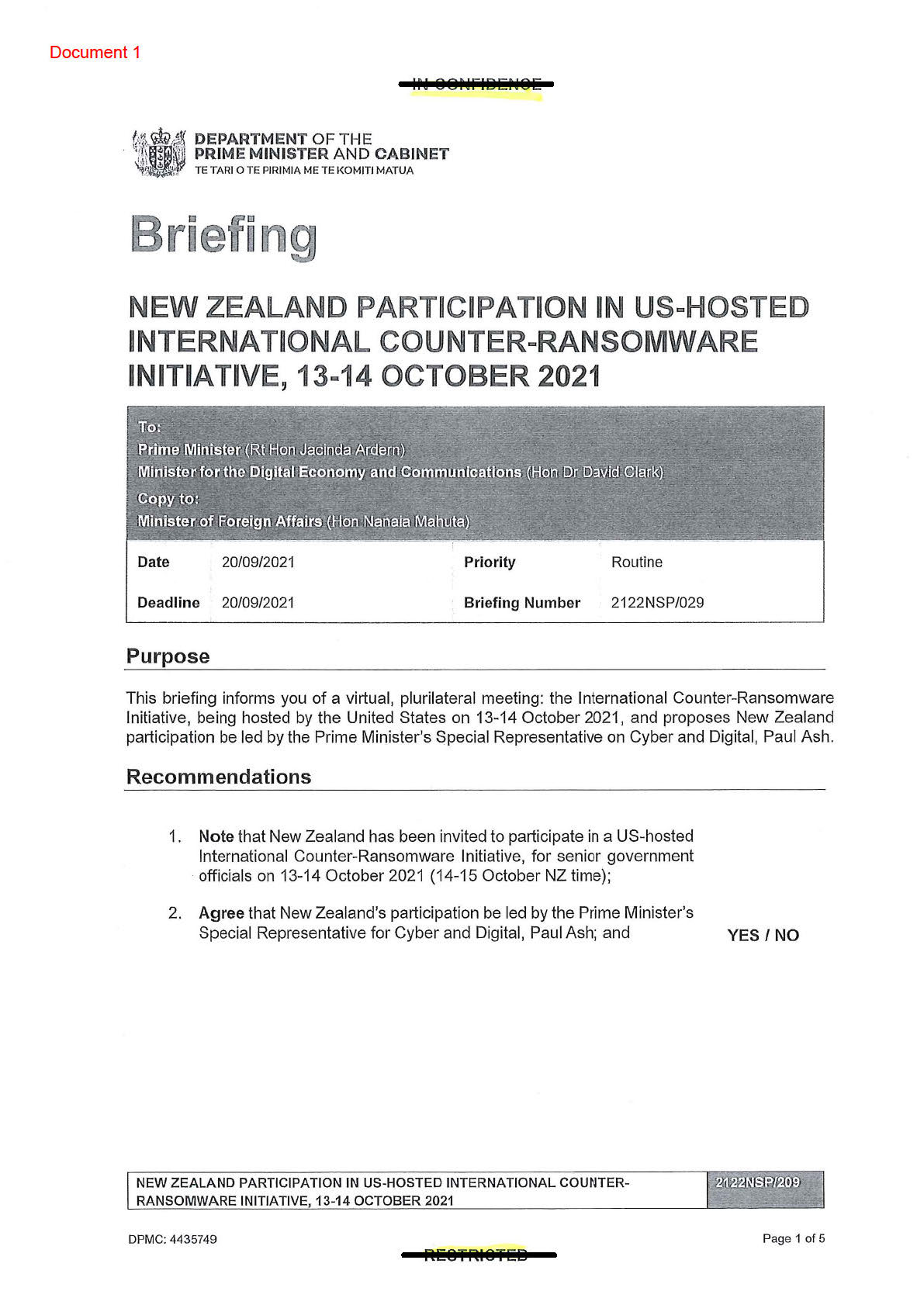
under the Official Information Act 1982
Released
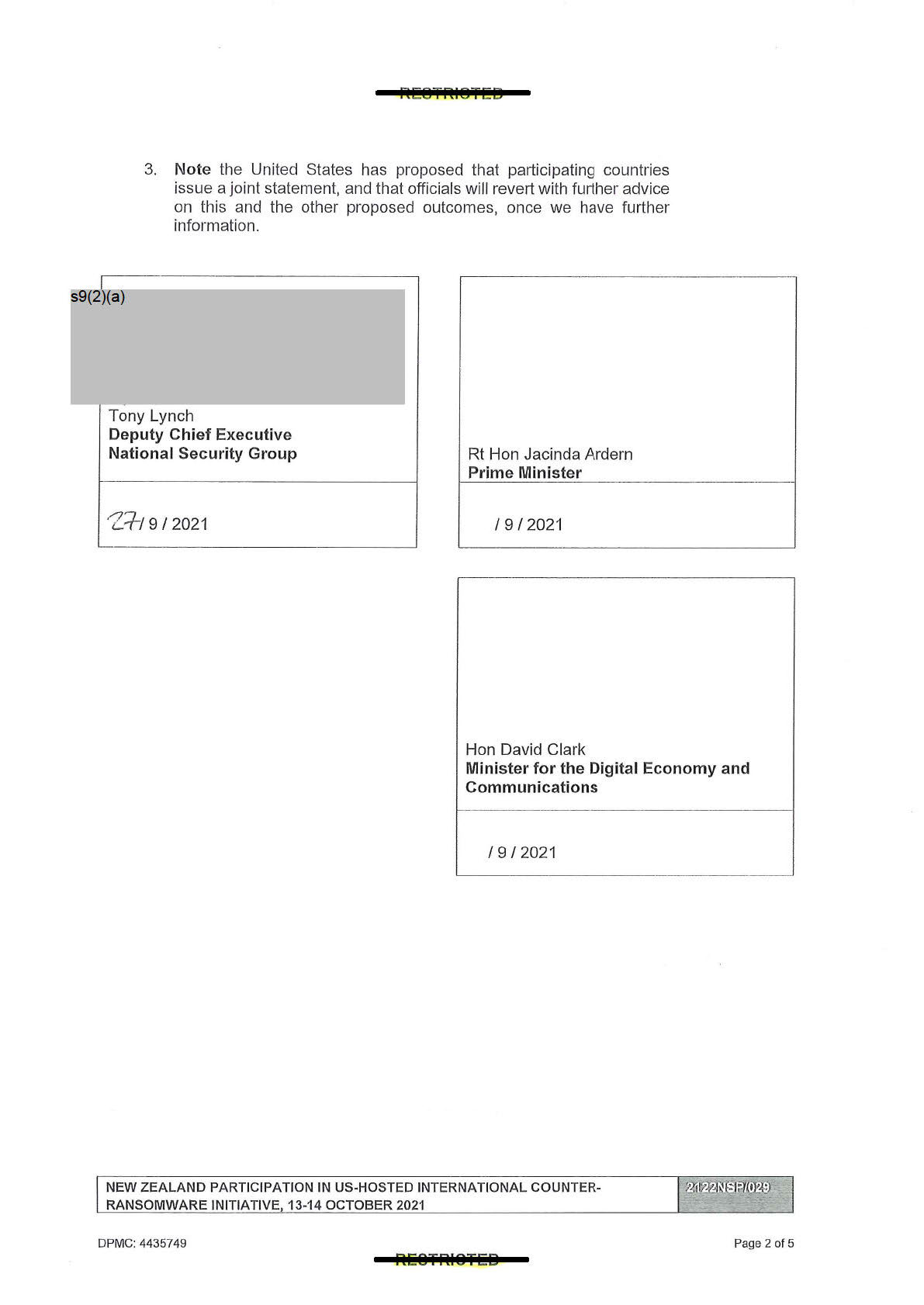
under the Official Information Act 1982
Released
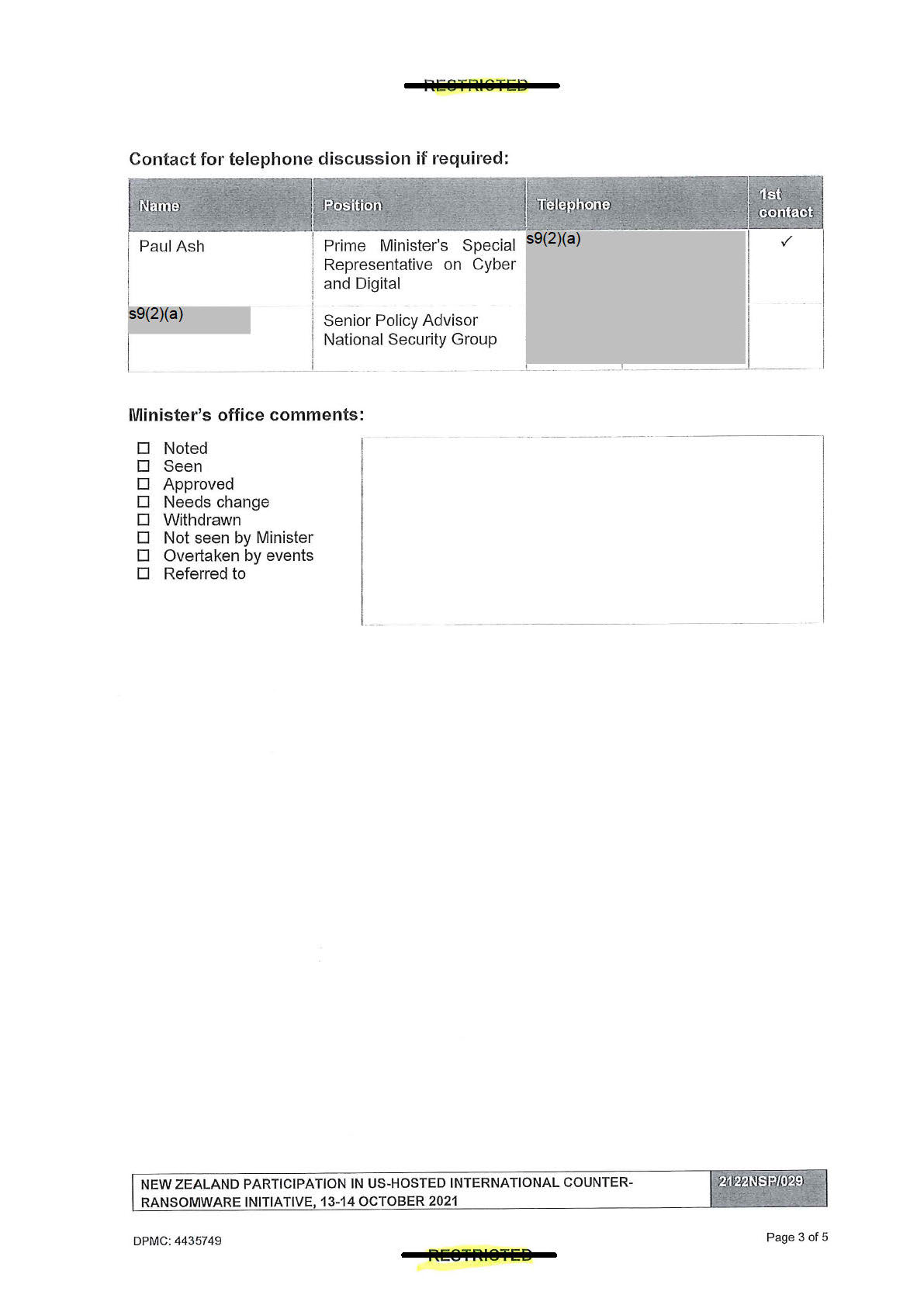
under the Official Information Act 1982
Released
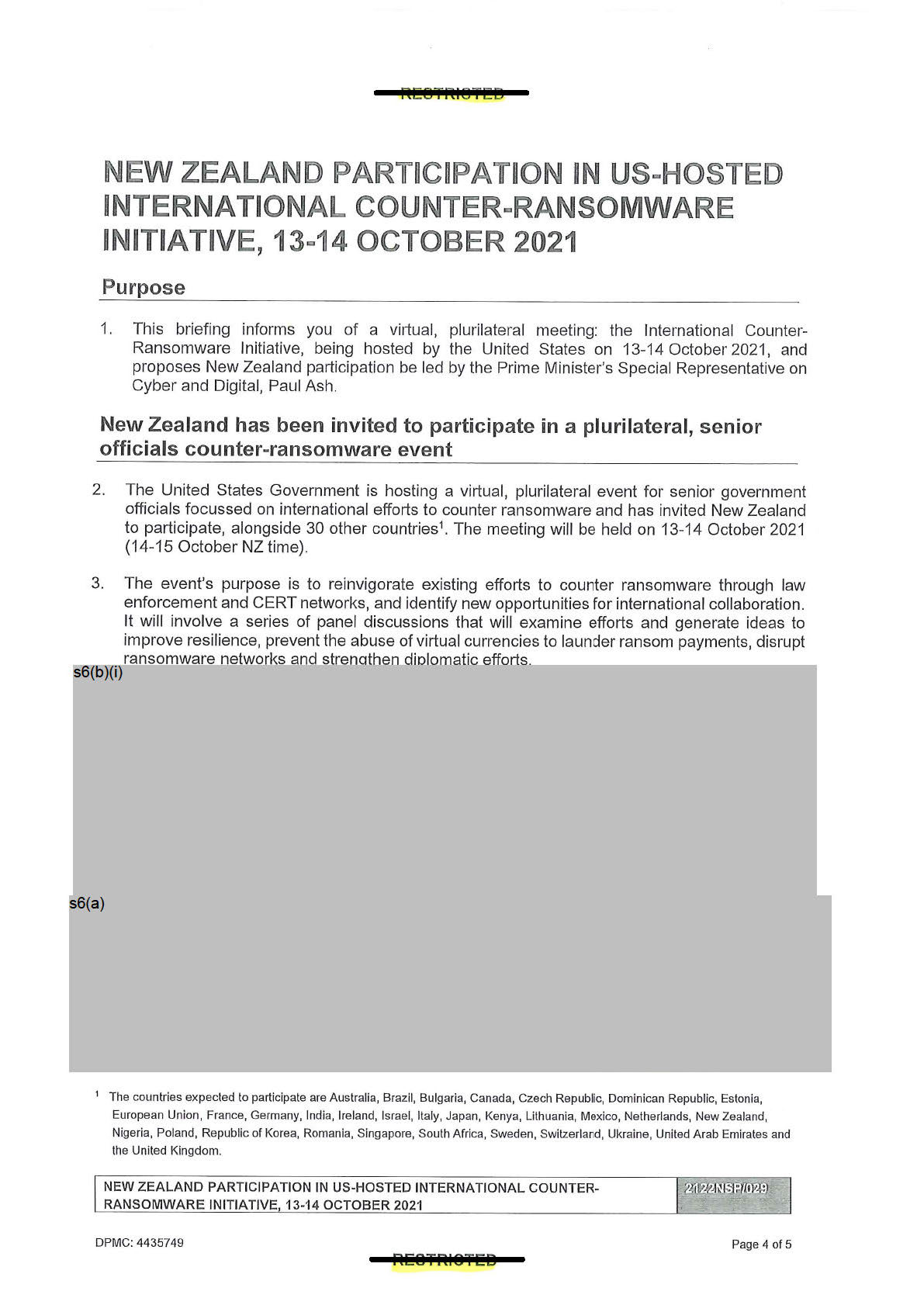
under the Official Information Act 1982
Released
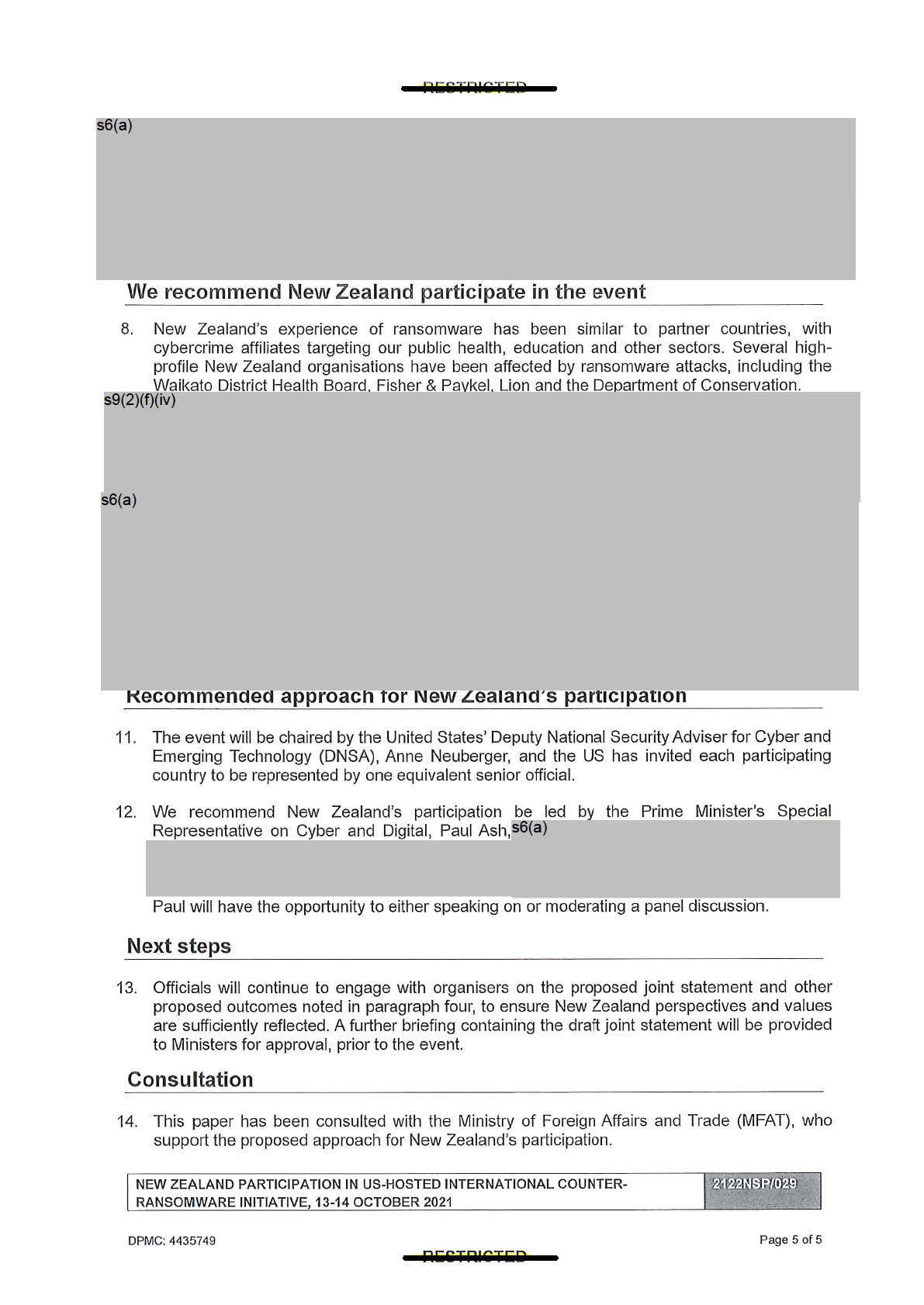
under the Official Information Act 1982
Released

under the Official Information Act 1982
Released
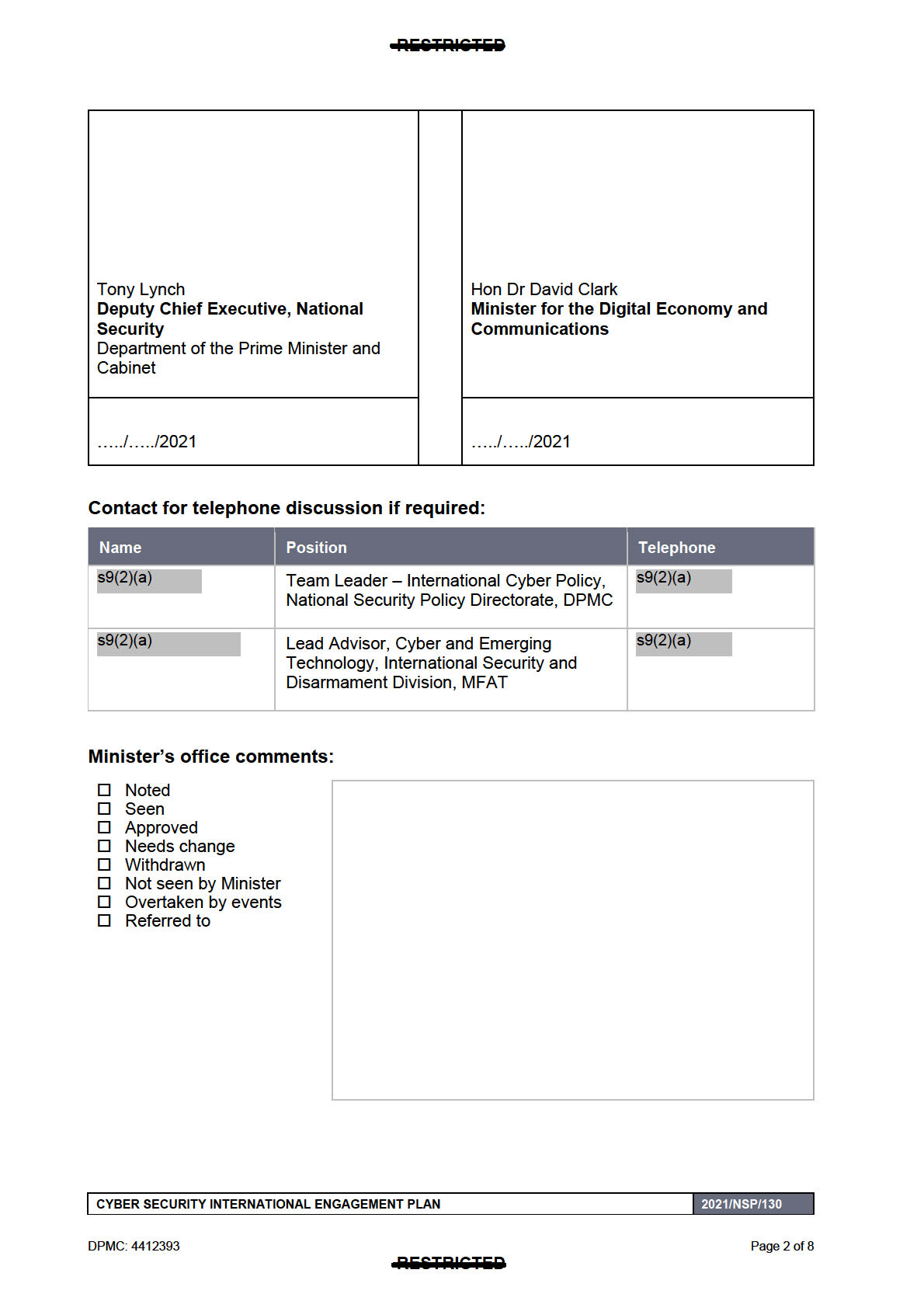
under the Official Information Act 1982
Released
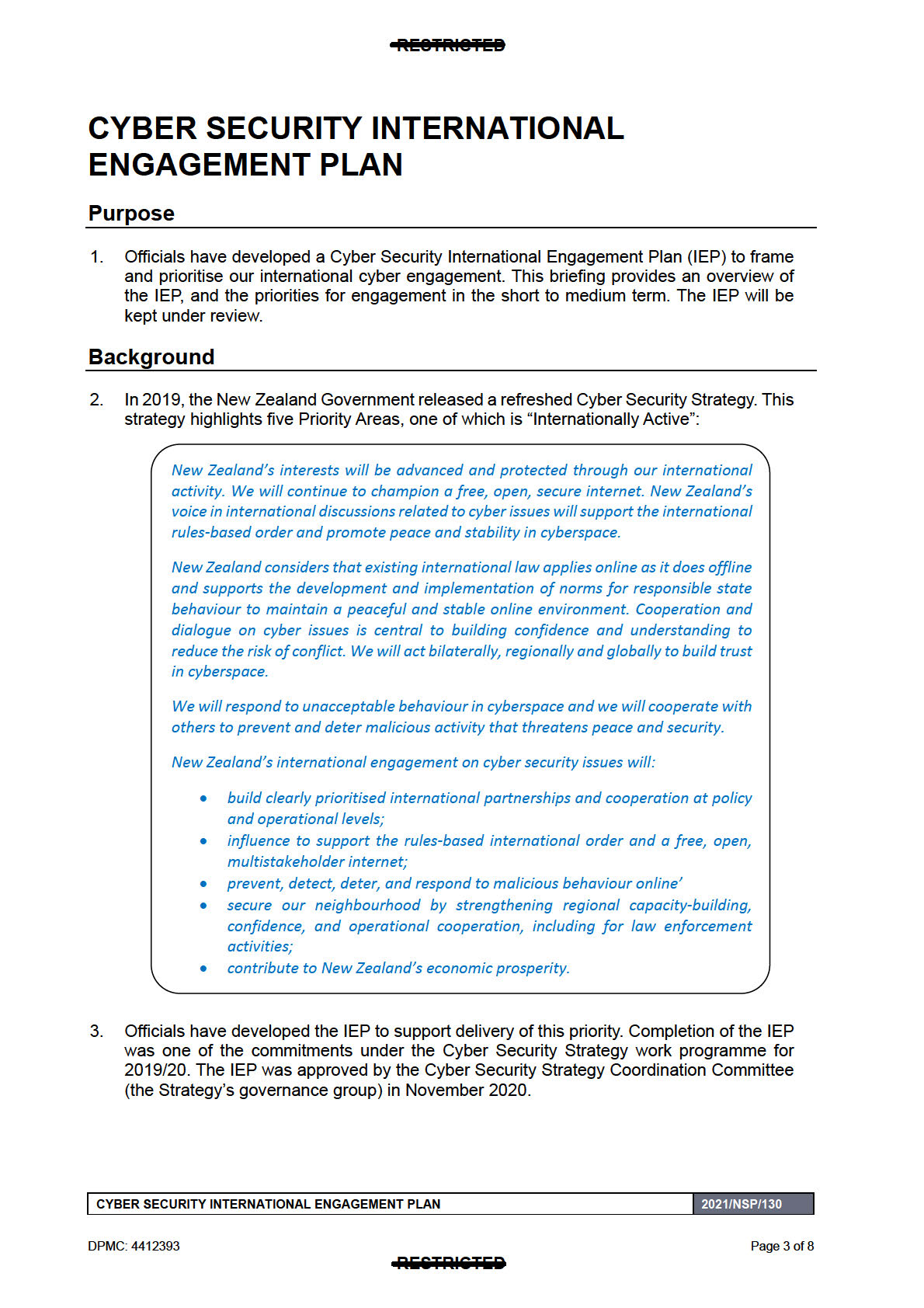
under the Official Information Act 1982
Released
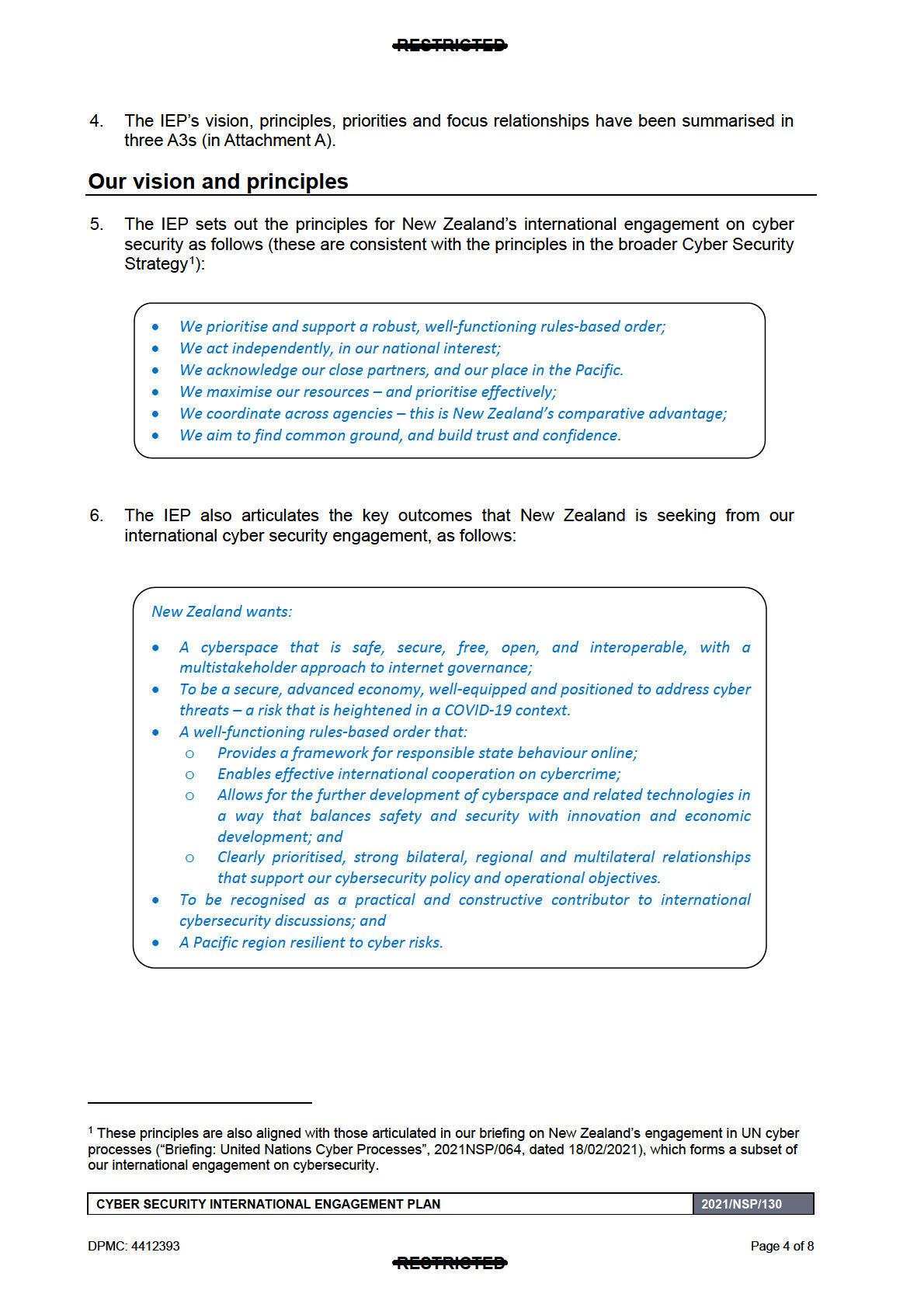
under the Official Information Act 1982
Released
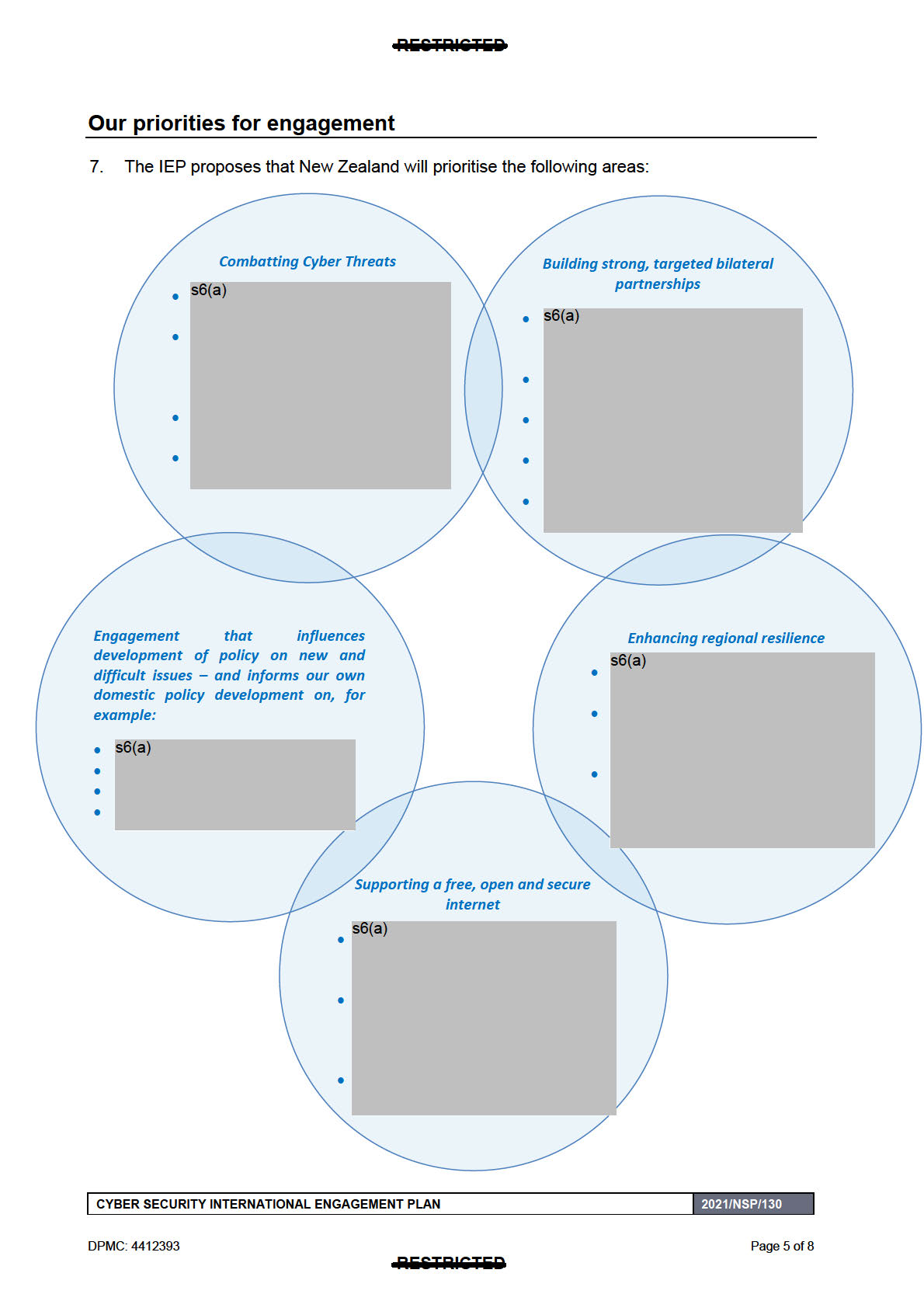
under the Official Information Act 1982
Released
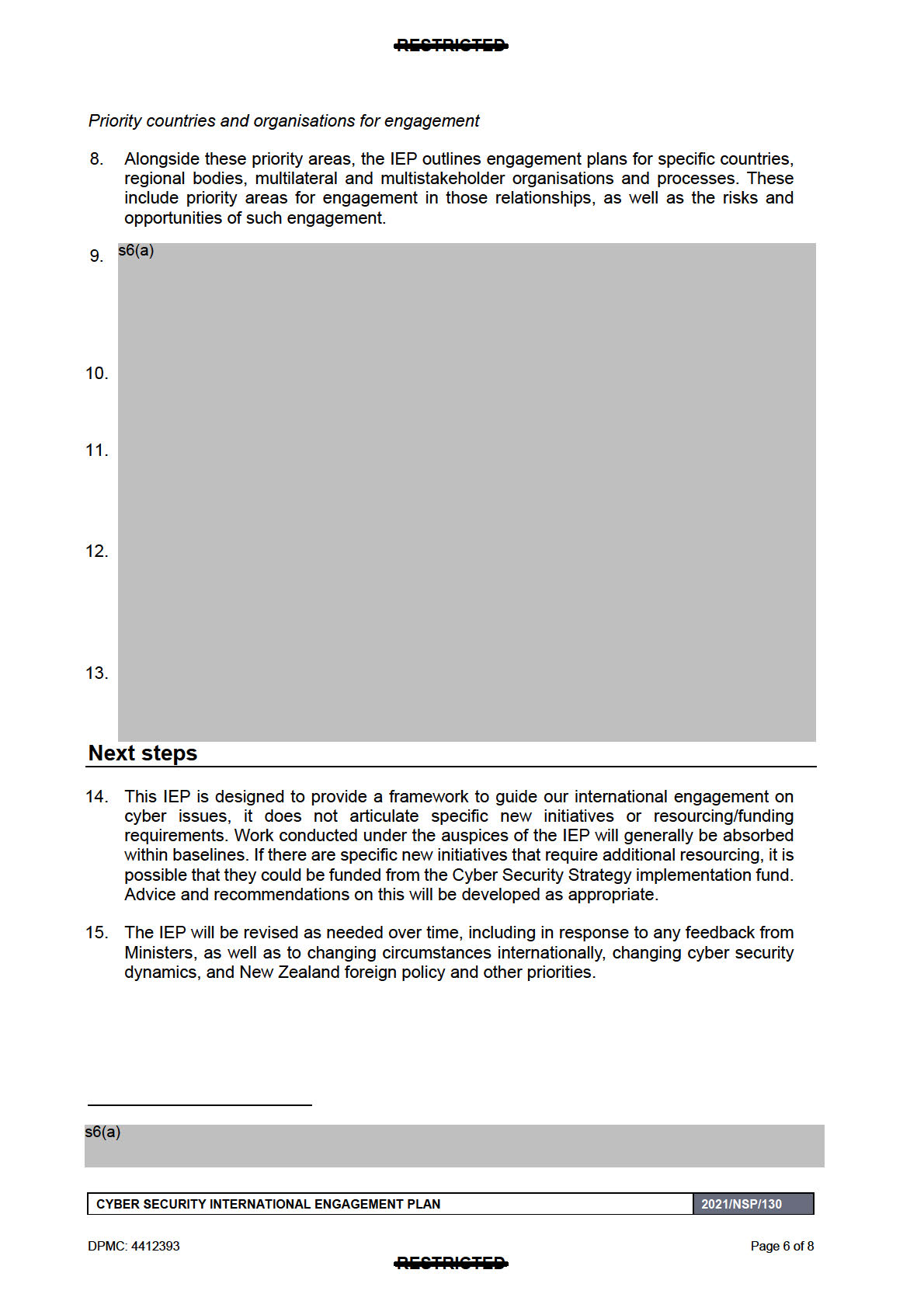
under the Official Information Act 1982
Released
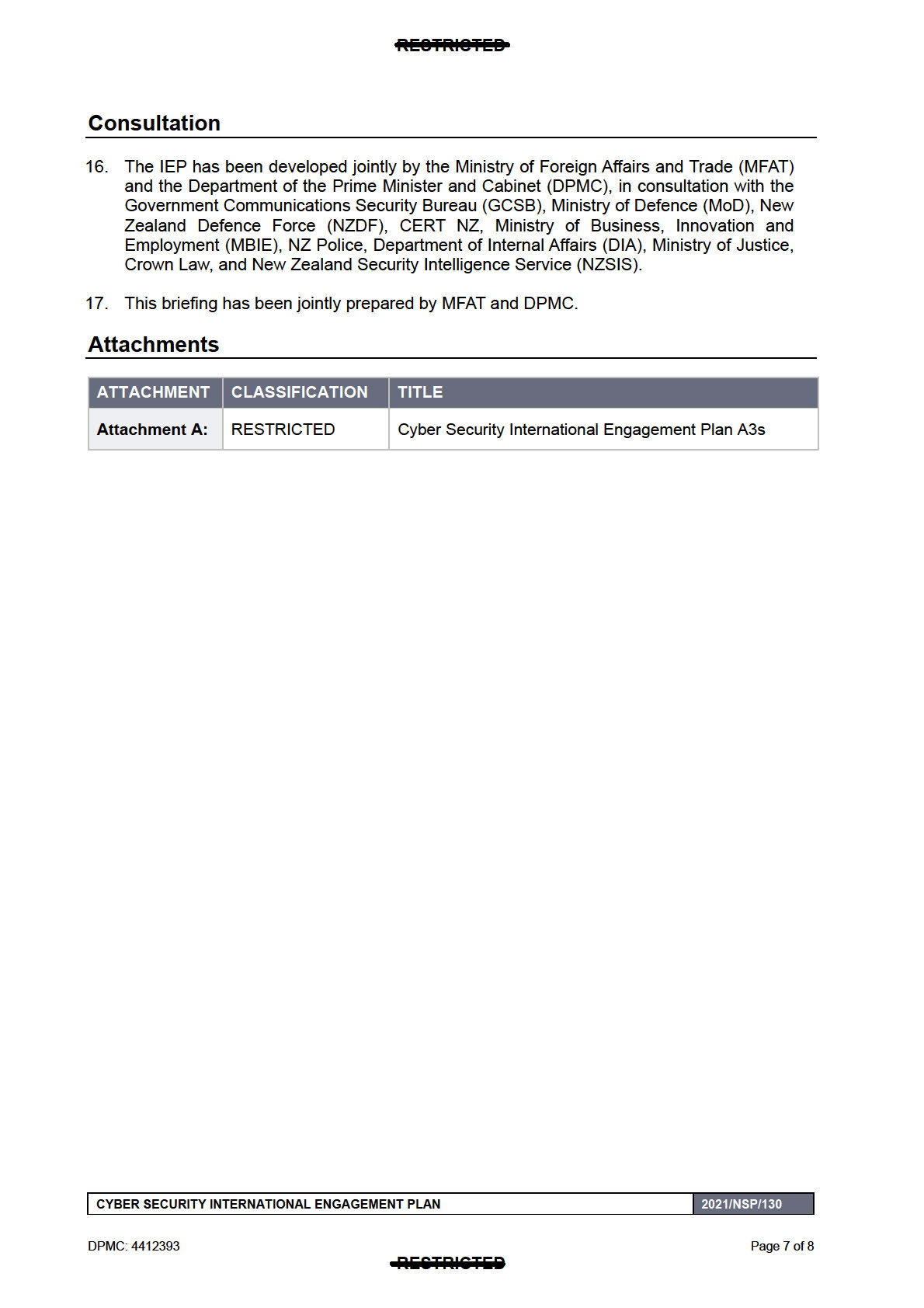
under the Official Information Act 1982
Released

under the Official Information Act 1982
Released

under the Official Information Act 1982
Released
s6(a)
under the Official Information Act 1982
Released
s6(a)
under the Official Information Act 1982
Released

under the Official Information Act 1982
Released
IN CONFIDENCE
Projects funded under the strategy to date
8. The following items have been funded from the Cyber Security Strategy appropriation in
2020/21. Lead agencies are listed in brackets.
Project
Cost NZD
(year to date Mar 21)
Trade Smart campaign contribution (CERT NZ)
200,000
Women in Cyber international workshop contribution
42,000
(MFAT)
GPAI Secretariat contribution (DPMC)
85,390
Salaries and other operating costs (DPMC)
513,714
Total
841,104
9. The salaries currently funded under the appropriation are:
a. Cyber Coordinator / Prime Minister’s Special Representative on Cyber and Digital 1.0 FTE
b. Principal Advisor (to deliver Budapest Convention) 1 0 FTE
c. Principal Advisor (cyber security workforce) 0.4 FTE
d. Senior Advisor (programme and project expertise) 1.0 FTE
Planned projects for 2020/21 and 2021/22
10. The following items are projected to be funded from the appropriation in 2020/21 and
2021/2022. Lead agencies are listed in brackets.
Proposed project
Estimated Cost NZD
s9(2)(f)(iv)
under the Official Information Act 1982
Released
DPMC: 4372098
Page 2 of 3
IN CONFIDENCE
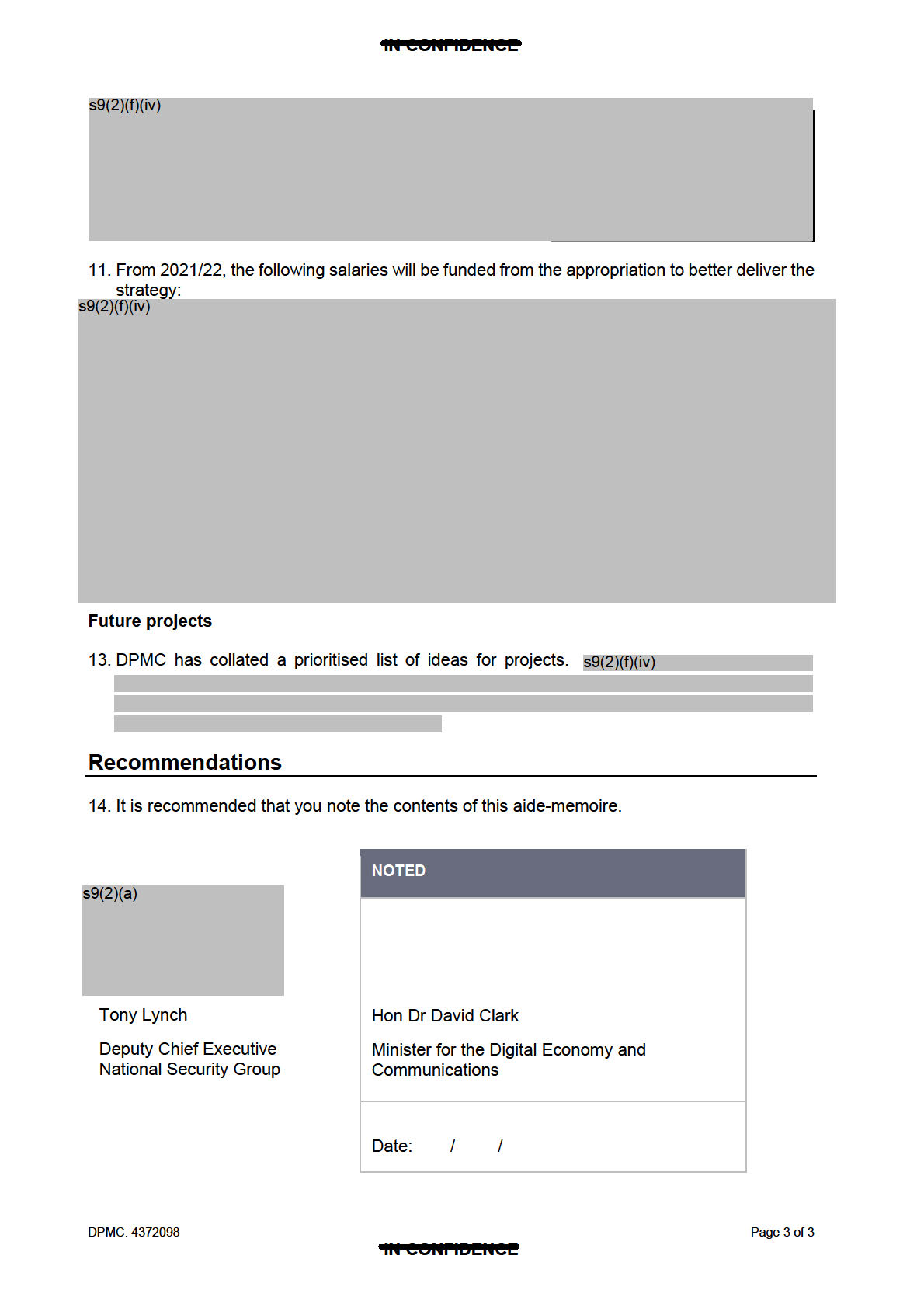
under the Official Information Act 1982
Released


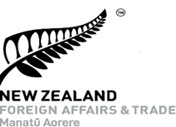

RESTRICTED
____________
Document 4
BRIEFING
5G Security: Introduction
Date:
25 November 2020
Priority:
Low
Security
classification: Restricted
Tracking
number:
2021-1429
Action sought
Action sought
Deadline
Hon Andrew Little
Note the contents of this briefing.
No deadline
Minister Responsible for the GCSB
Hon Nanaia Mahuta
Note the contents of this briefing.
No deadline
Minister of Foreign Affairs
Hon Damien O’Connor
Note the contents of this briefing.
No deadline
Minister for Trade and Export
Growth
Hon Dr David Clark
Note the contents of this briefing. No deadline
Minister for the Digital Economy and
Communications
Name
Position
Telephone
S9(2)(a)
James Hartley
General Manager, Commerce, Consumers and
Communications, MBIE
Sophie Vickers
Manager, NCPO, DPMC
Cecile Hillyer
Divisional Manager, International Security and
Disarmament Division, MFAT
Andrew Hampton
Director-General of the GCSB
Released under the Official Information Act 1982
The following departments/agencies have been consulted (if required)
Minister’s office to complete:
Approved
Declined
Noted
Needs change
Seen
Overtaken by Events
See Minister’s Notes
Withdrawn
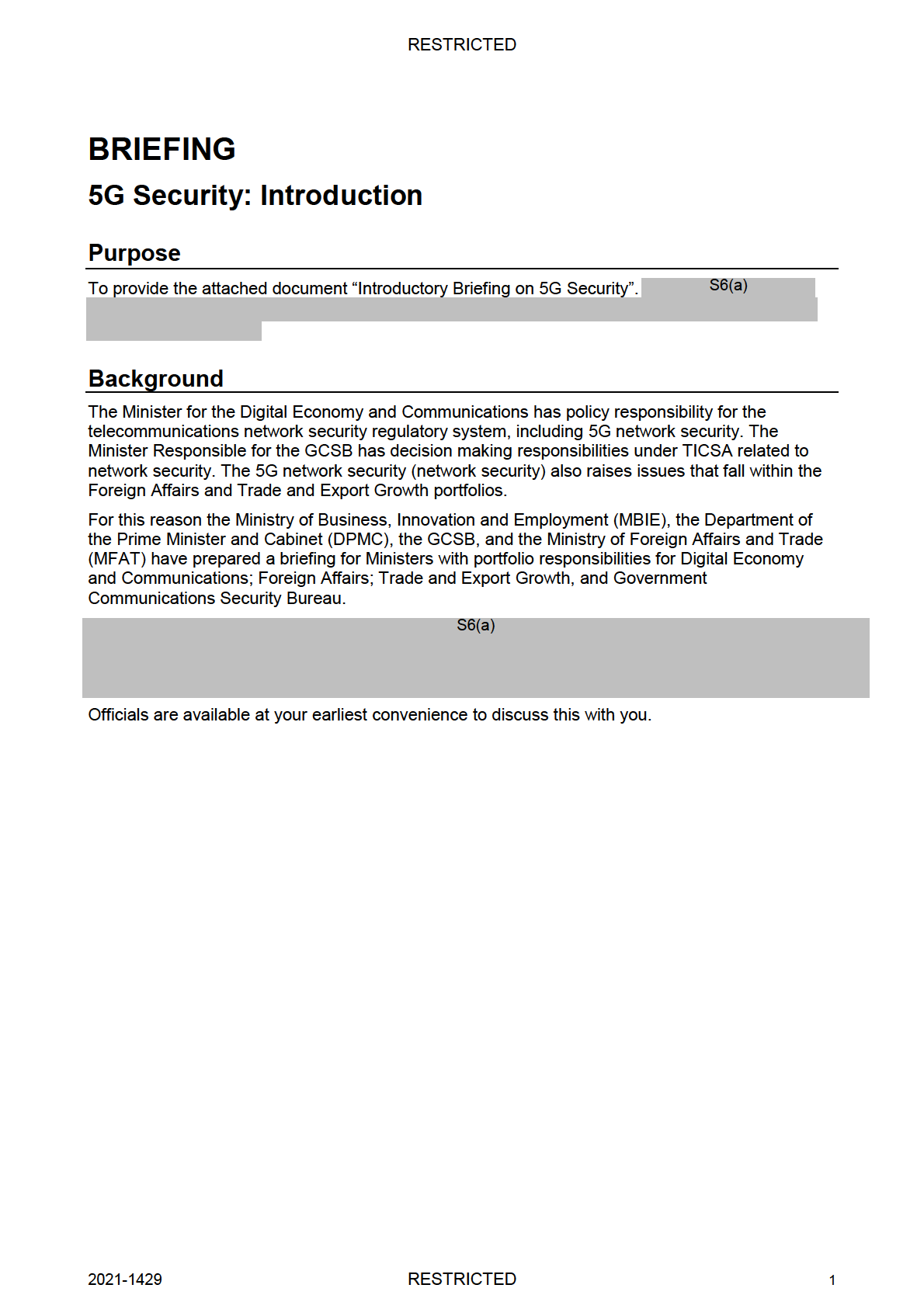
____________
Released under the Official Information Act 1982
____________
RESTRICTED
____________
Recommended action
The Ministry of Business, Innovation and Employment, the Department of the Prime Minister and
Cabinet, the GCSB and the Ministry of Foreign Affairs and Trade recommend that you:
a
Note the contents of this briefing.
Noted
S9(2)(a)
James Hartley
Hon Andrew Little
General Manager, Commerce, Consumers and
Minister Responsible for the GCSB
Communications
Ministry of Business, Innovation and
..... / ...... / ......
Employment
25 November 2020
S9(2)(a)
Andrew Hampton
Hon Nanaia Mahuta
Director-General of the GCSB
Minister of Foreign Affairs
25/11/2020
..... / ...... / ......
S9(2)(a)
Tony Lynch
Hon Damien O’Connor
Deputy Chief Executive, National Security Group Minister for Trade and Export Growth
Department of the Prime Minister and Cabinet
.... / ...... / .....
..... / ...... / ......
S9(2)(a)
Ben King
Hon Dr David Clark
For Secretary of Foreign Affairs and Trade
Minister for the Digital Economy and
Communications
Released under the Official Information Act 1982
.... / ...... / ......
..... / ...... / ......
2021-1429
____________
RESTRICTED
2




RESTRICTED
____________
Introductory Briefing on 5G
Security
Briefing prepared for the Minister Responsible for
the GCSB, Minister of Foreign Affairs, Minister of
Trade and Export Growth and the Minister for the
Digital Economy and Communications
Released under the Official Information Act 1982
November 2020
2021-1429
____________
RESTRICTED
3
RESTRICTED
____________
Purpose
S6(a)
1.
2.
5G in context
What is 5G and why is it different to previous networks?
3.
5G is the next generation of mobile (wireless) technology. It will deliver faster mobile connections
and data processing, better coverage, significantly increased capacity, and reductions in the delay
between devices responding to each other over the wireless network (referred to as ‘low latency’).
4.
While previous generations of wireless technology have largely focused on data and voice services,
5G represents a fundamental shift in how mobile technology is used. Access to massive amounts of
data at significantly faster speeds will have numerous practical applications which are expected to lift
productivity, enhance individuals’ lives, and improve environmental quality.
5.
5G will enable further advances in artificial intelligence (AI) technology for a broad array of new
business processes and applications and underpin the so-cal ed ‘Internet of Things’ (IoT).1 It will
provide for applications such as enhanced augmented and virtual reality, autonomous vehicles, and
remote surgical operations.
6.
5G will enable a diverse range of applications in part due to changes to the technological architecture
of telecommunications networks. With previous mobile networks, the ‘core’ functions (i.e. where
data is sorted and processed) and the ‘edge’ (i.e. the cellular radio functions) of the network have
been largely separate. With 5G, these are effectively combined, with more processing functions at
the ‘edge’ of the network, closer to the connected mobile devices.
New Zealand’s roll out of 5G
7.
As New Zealand’s mobile market is primarily private sector-led, commercial decisions will affect the
time it takes for the full range of 5G deployment cases to be realised. In New Zealand, Spark and
Vodafone have commenced the rol out of their 5G networks in some regional towns (fixed wireless)
and urban centres (mobile services) and 2degrees has announced it wil commence the rol out of 5G
in 2021. While 5G roll out will be led by the commercial sector, the Government has an interest in
this technology due to the critical function it will play across the economy and society.
Released under the Official Information Act 1982
1 Internet of Things refers to the network of devices and objects that are embedded with sensors, software and other technologies for
the purpose of connecting and exchanging data with other devices and systems over the internet.
2021-1429
____________
RESTRICTED
4
RESTRICTED
____________
5G security
5G and new security risks
8.
As with previous mobile generations, 5G presents security risks. However, the risks 5G presents are
not limited to just the configuration of the network, but also include the range and scale of
interactions that 5G wil enable.
S6(a)
S6(a)
9.
S6(a)
S6(a)
10.
S6(a)
11.
New Zealand’s approach to 5G security risk
Released under the Official Information Act 1982
12.
The New Zealand Government has a range of legislative, policy and other programmes that
contribute to mitigating and managing the risk associated with communications infrastructure,
including 5G.
2021-1429
____________
RESTRICTED
5
RESTRICTED
____________
Addressing network security through the Telecommunications (Interception
Capability and Security) Act 2013
13.
Since 2014, New Zealand has managed its public telecommunication network security (including 5G)
through the Telecommunications (Interception Capability and Security) Act 2013 (TICSA).
14.
The purpose of Part 3 of TICSA is to prevent, sufficiently mitigate, or remove security risks arising
from the design, build, or operation of public telecommunications networks, and from the
interconnections of public telecommunications networks in New Zealand, or to networks overseas.
MBIE is responsible for administering TICSA and associated policy. GCSB operationalises the network
security provision of TICSA.
15.
Under TICSA, network operators are required to notify the GCSB of planned changes to their
networks within certain areas of specified security interest (notifiable changes could include the
acquisition of equipment or services, changes to network architecture or changes in ownership or
control). The GCSB assesses each notification for potential network security risk on a case-by-case
basis (i.e. there are no ‘bans’ – TICSA is vendor and country agnostic). Only factors that impact on
network security can be taken into account in these assessments.
16.
If a network operator’s proposal raises a significant network security risk, and the network operator
is unable to prevent or sufficiently mitigate this risk, the Director-General of the GCSB may refer the
matter to the Minister Responsible for the GCSB for a direction to prevent, reduce or mitigate the
identified network security risk.
17.
TICSA sets out a process for the Minister to make a direction that requires consideration of a range of
factors in addition to network security, including the potential consequences of the direction on
competition and innovation in the telecommunications market and the potential impact on the
direction of trade. This process also includes consultation with the Minister for Communications
(now the Digital Economy and Communications portfolio) and the Minister of Trade.
18.
The majority of notifications raise minimal or no network security risk
S6(a)
S6(a)
19.
S6(a)
S6(a)
20.
S6(a)
Released under the Official Information Act 1982
2021-1429
____________
RESTRICTED
6
RESTRICTED
____________
S6(a)
36.
37.
38.
S6(a)
39.
S6(a)
40.
Portfolio responsibilities
41.
Telecommunications network security issues sits across several portfolios:
• Digital Economy and Communications
• Foreign Affairs
• Trade
• GCSB
• National Security and Intel igence.
42.
The Minister for the Digital Economy and Communications has responsibility for administering TICSA.
43.
The Minister Responsible for the GCSB has decision making responsibilities under TICSA related to
Released under the Official Information Act 1982
network security. In making those decisions the Minister Responsible for the GCSB is required to take
into account factors relating to the Digital Economy and Communications and the Trade portfolios.
S6(a)
44.
S6(a)
2021-1429
____________
RESTRICTED
9
RESTRICTED
____________
S6(a)
45.
S6(a)
46.
Released under the Official Information Act 1982
2021-1429
____________
RESTRICTED
10
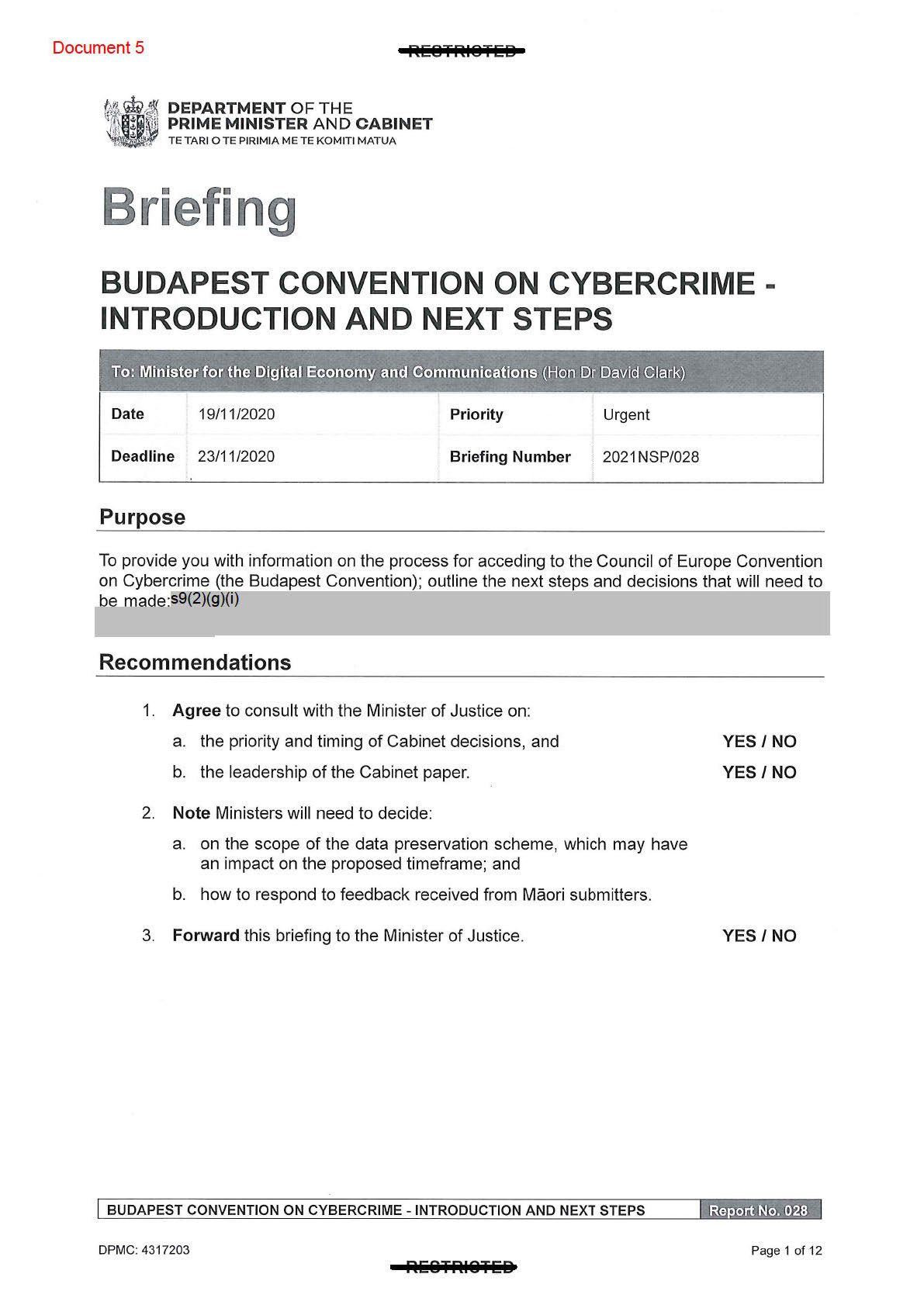
under the Official Information Act 1982
Released
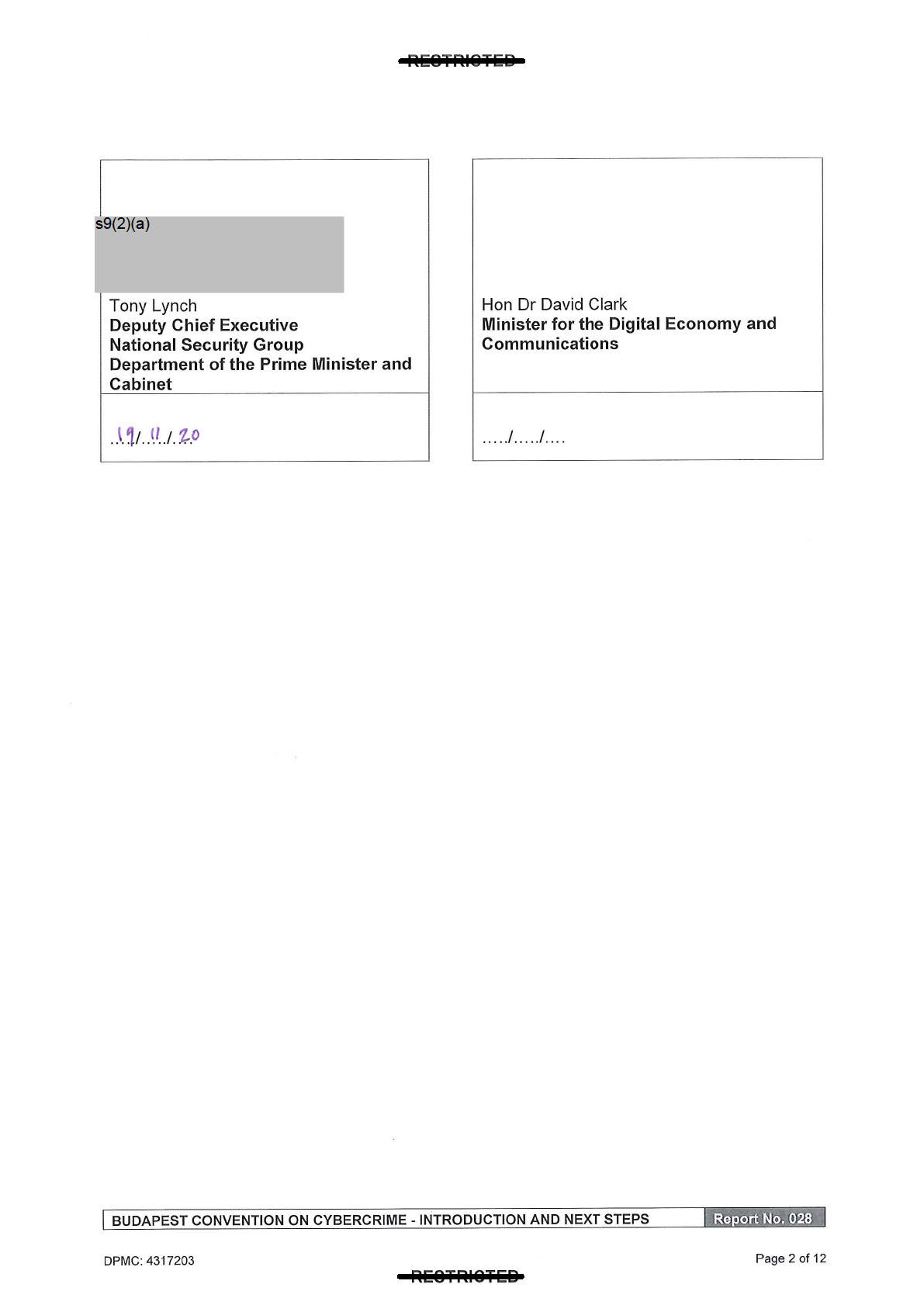
under the Official Information Act 1982
Released
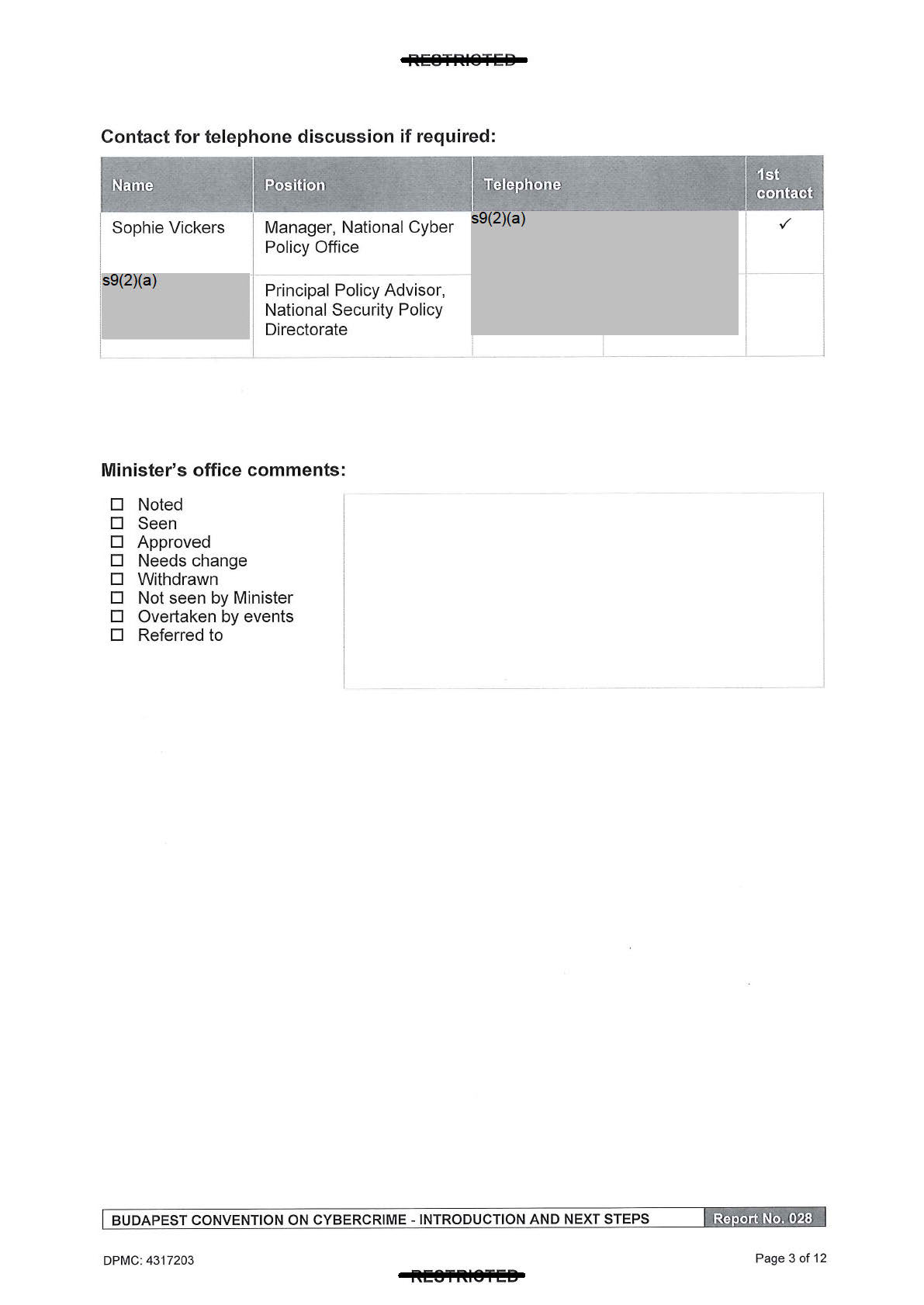
under the Official Information Act 1982
Released
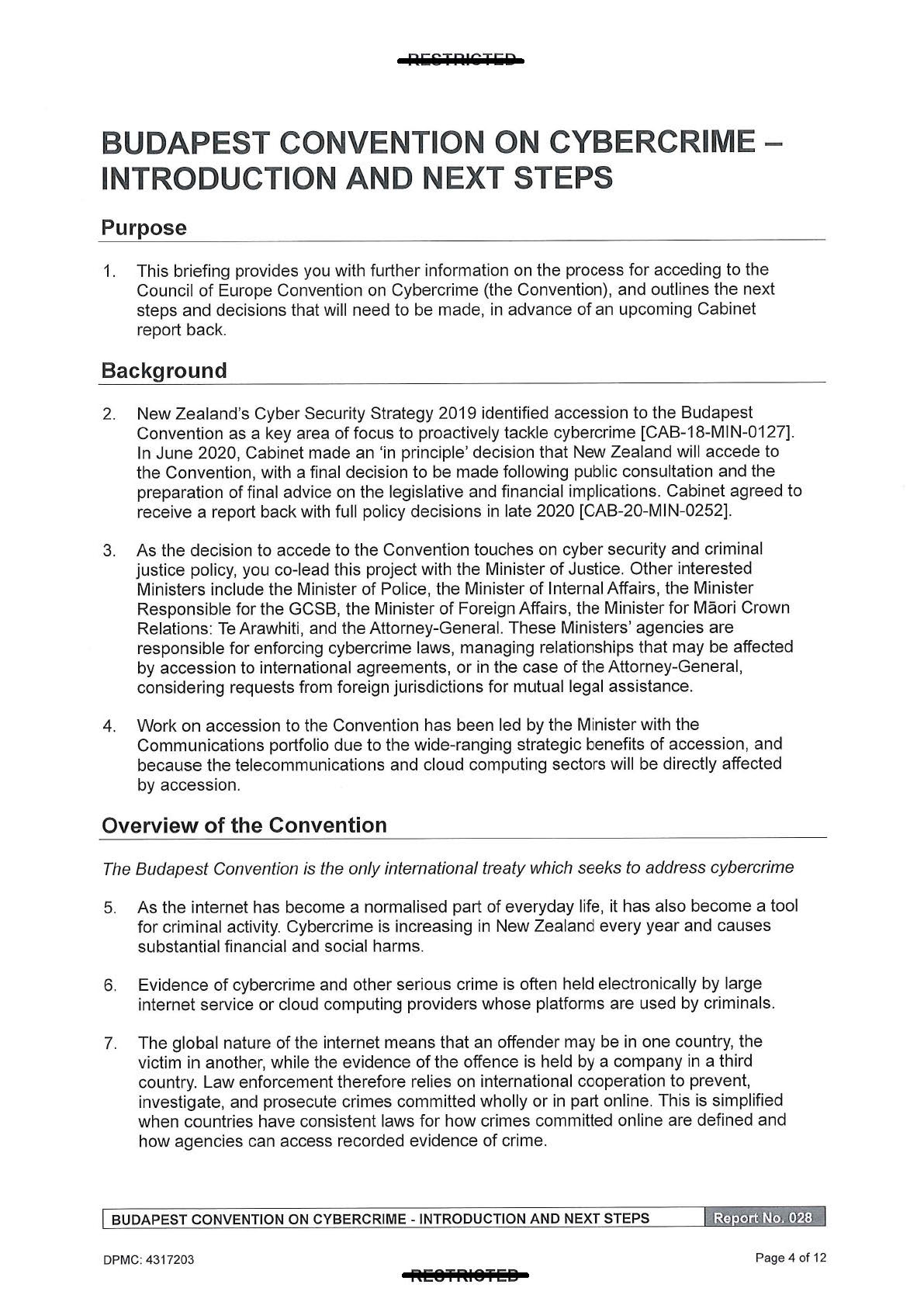
under the Official Information Act 1982
Released

under the Official Information Act 1982
Released

under the Official Information Act 1982
Released
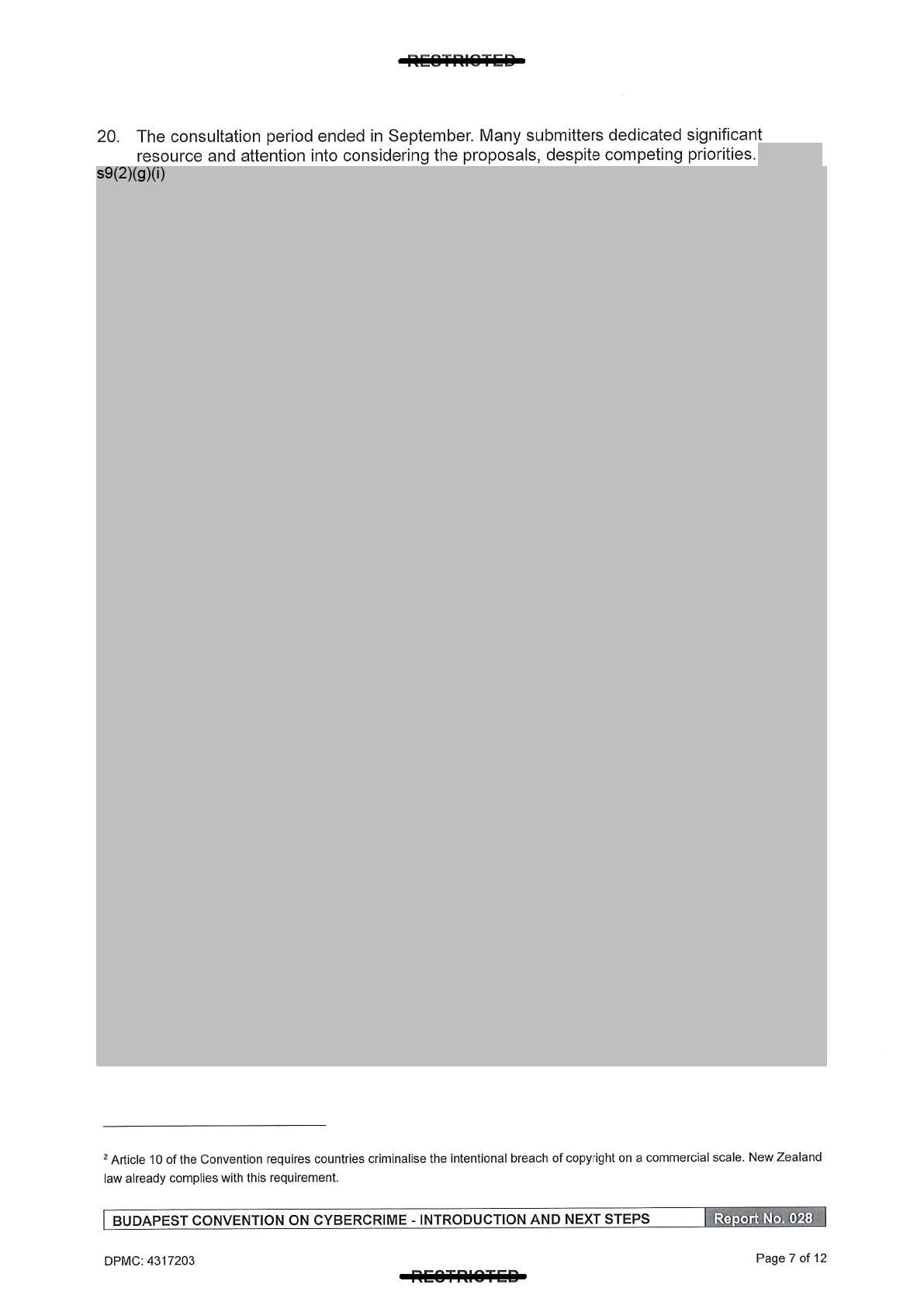
under the Official Information Act 1982
Released
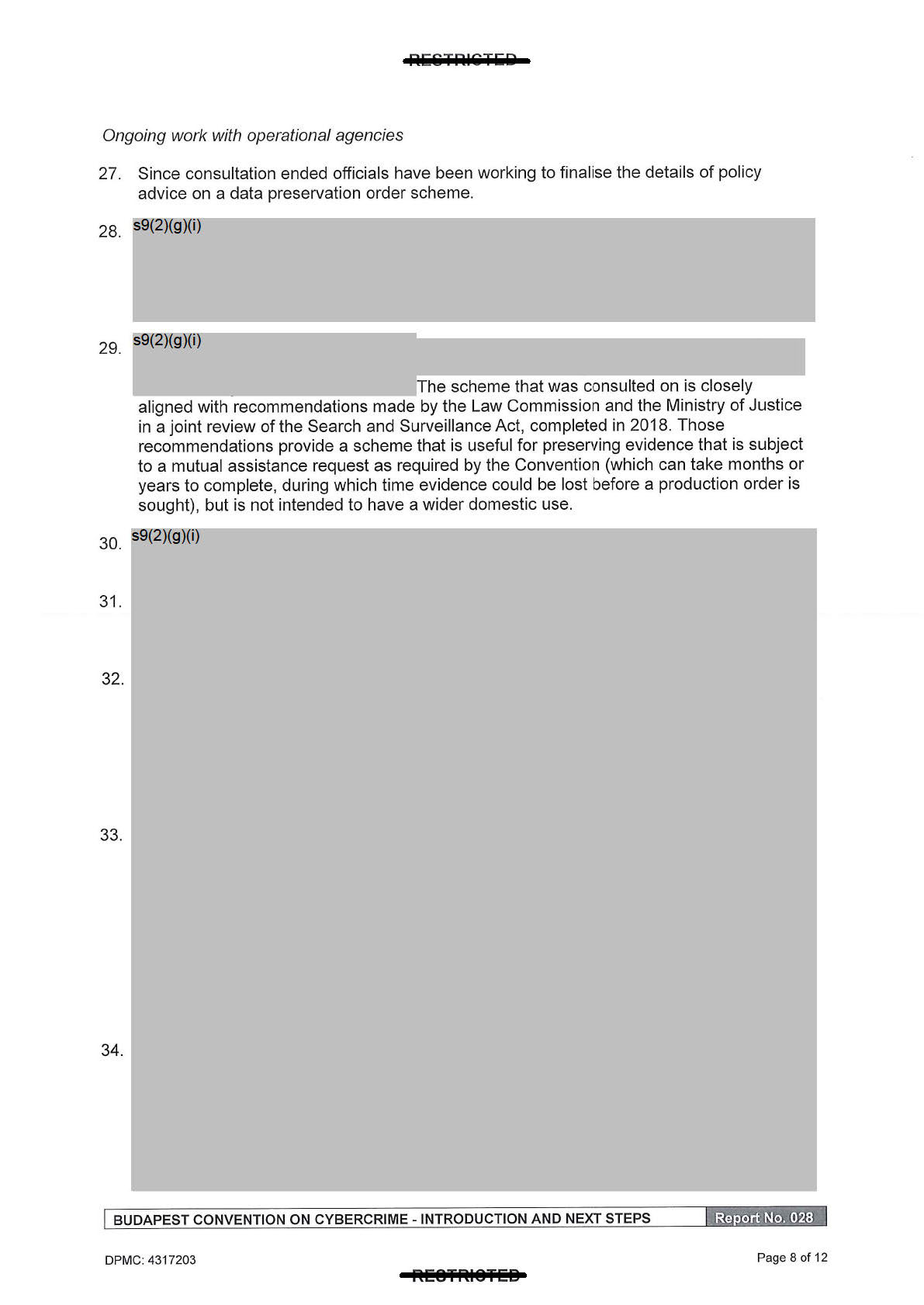
under the Official Information Act 1982
Released
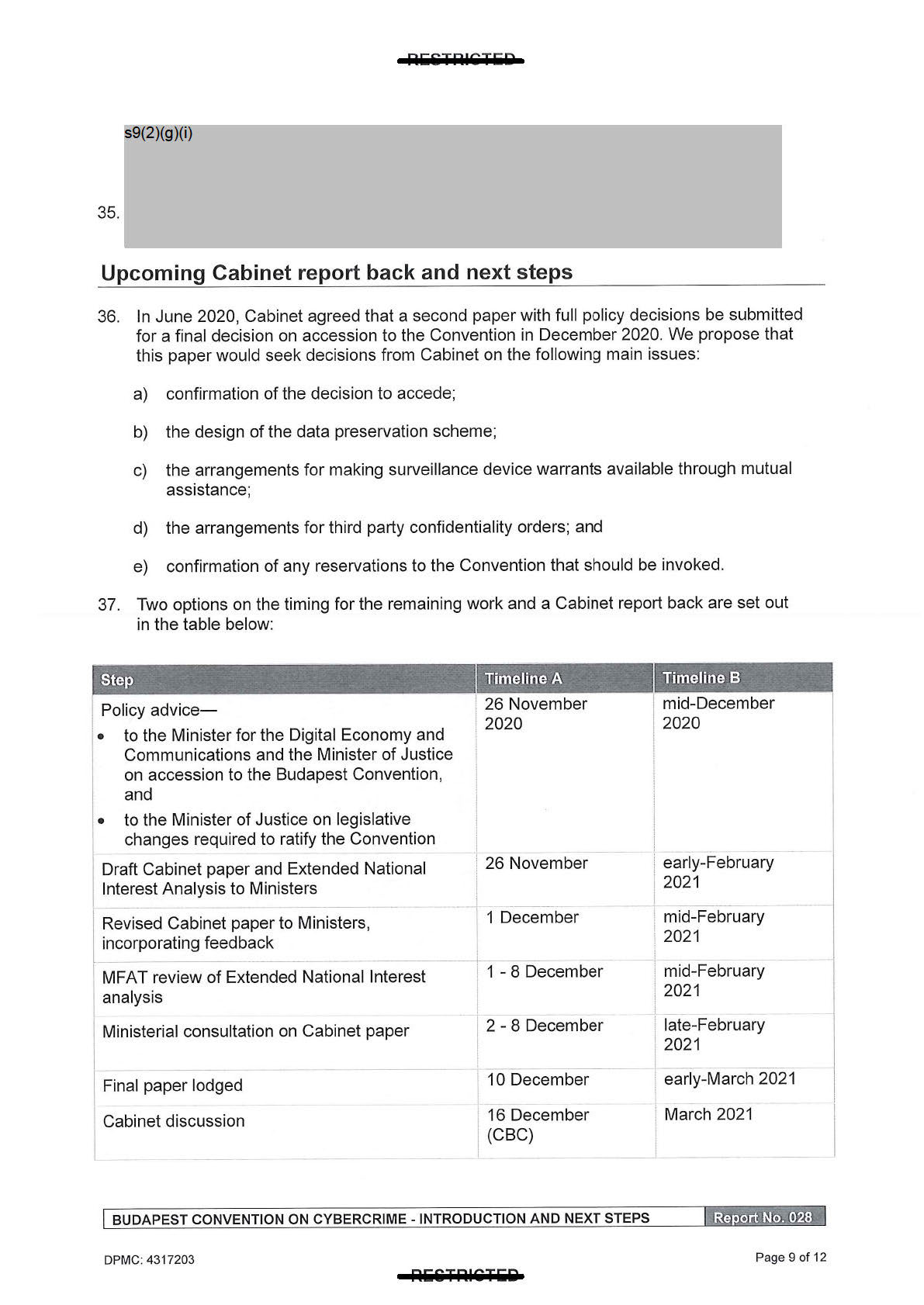
under the Official Information Act 1982
Released
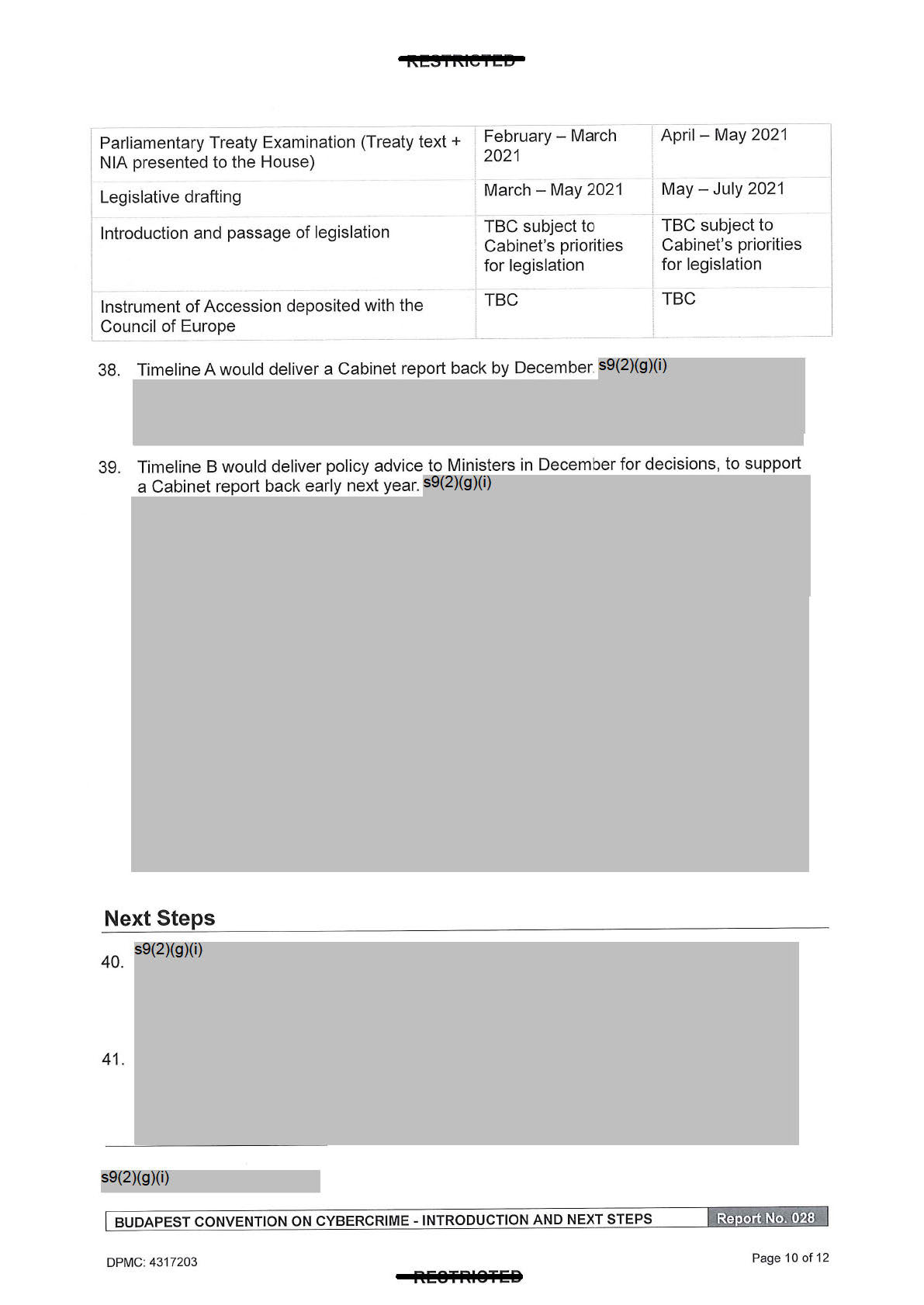
under the Official Information Act 1982
Released
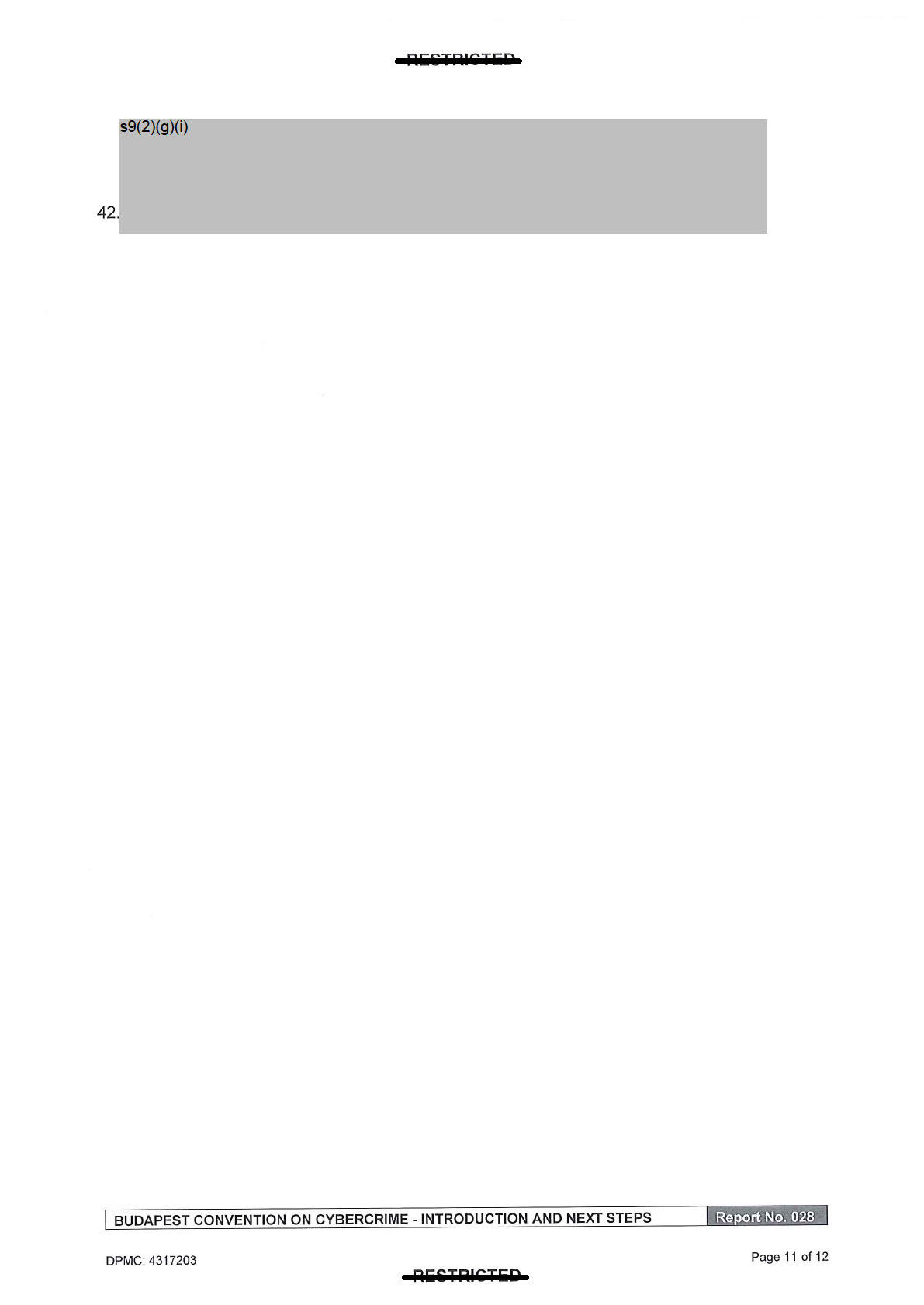
under the Official Information Act 1982
Released

under the Official Information Act 1982
Released
Document Outline




































